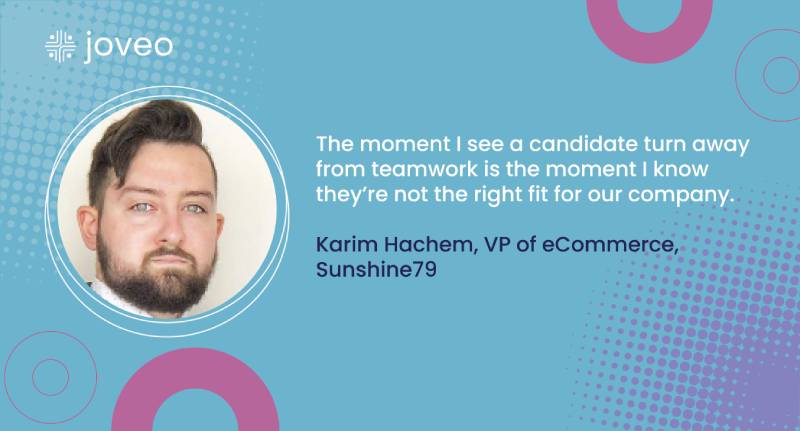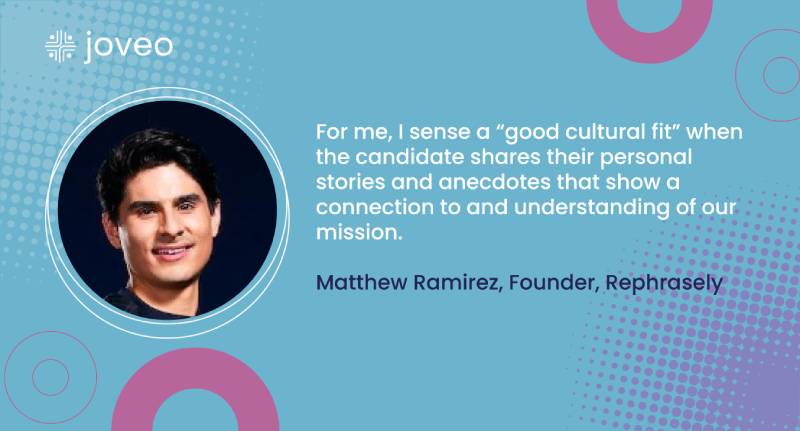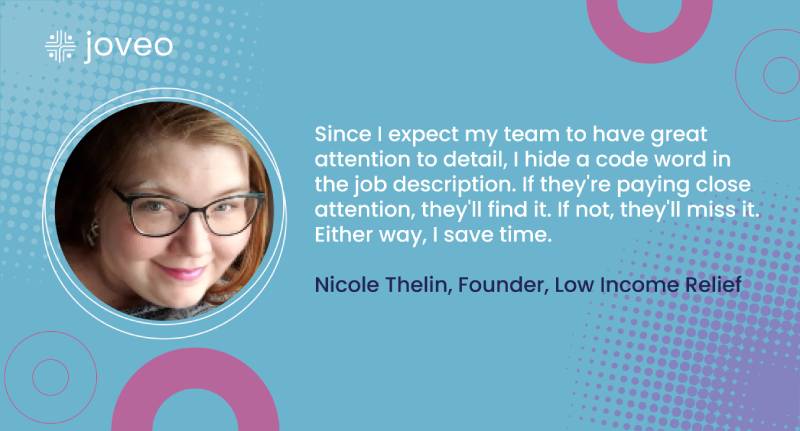Can you pinpoint when, in the recruiting process, you get that gut feeling a candidate is the right fit?
To help improve your recruitment process and hire the right people, we asked business leaders and recruiting managers for their best insights. From looking at the candidate’s ability to connect your brand’s mission statement to using hidden code words in applications, here are several strategies that can maximize your hiring strategy and cultivate a good sense for “knowing” when a candidate is a good fit to hire.
Seeing Good Background Alignment
“It’s imperative you know what the candidate’s background entails: their skill sets and their strengths. Understanding what motivates and excites them, as well as what scares them and what work experiences they are running from, is crucial in aligning not just a resume fit but a cultural fit.
The culture fit on both sides is the biggest indicator of whether a placement will be a fall-off or a proper match. Equally as important is understanding the genuine needs of the hiring manager and determining which of the job specifications are truly important and which are negotiable.
It’s never a perfect science, but if you know your candidate and the job specifications, you know rather quickly whether they’re a fit.”
Letticia Pierrez, Recruiting Manager, Robert Half
Rely on Requirements to Get a Better Sense
“When I’m helping a client recruit, I craft my process to qualify candidates for specific things at each step.
For example, in a resume screening, I look for minimum years of experience and anything else that is required, like a college degree. Only some candidates objectively meet the requirements.
I often use a customized candidate survey next in the process that asks candidates to give examples of their experience with each of the required skills and salary requirements. With these questions, it’s also easy to identify candidate fit.
What can sometimes be challenging for recruiters though, is how to vet candidates for cultural fit.
Since unconscious bias is always a part of how we evaluate candidates, it’s important to identify what company values and team dynamics are important at the beginning and look for alignment at each step of the process.
By the third or fourth step of the recruiting process, I have several candidates that are a fit for the role and my client.”
Katie Parker, Founder and CEO, Startup Your HR

When the Candidate is a Team Player
“If they are a team player, they’re a fit. Teamwork is the most important element of having a successful company. If I see a candidate is not supporting the team, or getting along with the team during the recruitment process, I know they’re not a fit for our company.
For example, even the simple act of choosing not to engage in conversation with the team shows me that this candidate is not a team player. They may be great at their job, but if they will not take the time to learn who they’re working with and develop a relationship with them, how can I expect them to problem-solve together when we’re under a stressful deadline?
The moment I see a candidate turn away from teamwork is the moment I know they’re not the right fit for our company.”
Karim Hachem, VP of eCommerce, Sunshine79
Use an In-Person Interview to Help Assess
“Finding the right fit for a role can take a while, especially if you can afford to be picky about your next team member. It’s better to take your time hiring someone who’s going to be a supportive part of your company so you can focus on your long-term goals during the recruitment process.
While interviewing potential candidates, it’s important to keep both the job responsibilities and the coworkers this person would be most interacting with in mind.
This will give you a better idea of how well a candidate would get along with the team as well as what they bring to the job. Interviewing someone in person makes this easier, as you can better see how they respond to different situations and how that would translate to an average workday.”
Alex Mastin, CEO and Founder, Home Grounds
Discover how data, insights, and the ability to engage with candidates at scale can be your secret sauce to streamline the talent sourcing process.
Move Your Talent Sourcing From Chaotic to Strategic!
Use Objective Data to Assist With “Knowing”
“When do you “know” someone is a fit for a role? About three to six months after they’ve started. Unfortunately, that doesn’t help you decide whom to make an offer to. That’s why it’s crucial to follow a disciplined recruiting process before making an offer. Doing so will increase the likelihood of selecting whoever is the best fit.
Have a very clear vision of the job requirements and a persona of the optimal hire; craft a job description that clearly communicates that to candidates; effectively target your job advertisements to the most relevant candidates and maximize the quality of your recruiting funnel; use a structured interview process tied directly to the job requirements; involve multiple people in the interview process; use objective data to help identify candidates with the highest potential.
Even when doing all that, you still can’t be 100% sure. But by doing so, you’ve likely increased your confidence and minimized the risk of making a bad hire.”
Matthew Hamilton, Vice President, People Analytics and HRIS, Protective Life

When They Connect Our Mission to Their Own Lives
“Getting a candidate through the first round of interviews is just the first step. Our hiring process is rigorous and involves in-depth assessments to ensure that our team members are a good fit for our company culture.
At the end of the day, we want to make sure that the person we choose will be happy in their role and at our company—that’s the most important part of the recruitment process. It’s crucial to make sure that the person we hire is a good cultural fit. For me, I sense a “good cultural fit” when the candidate shares their personal stories and anecdotes that show a connection to and understanding of our mission.
If someone can articulate why our mission and values matter to them and how they’ve applied that understanding in their own lives, it shows that they’re a good cultural fit and align with our values.”
Matthew Ramirez, Founder, Rephrasely
Try Before You Buy
“While there are many indicators that someone may or may not be a good fit for a particular opportunity, these indicators tend to be motivation-based vs competency-based.
For example, if someone prefers a manager who provides detailed instructions, but you know the person they’d report to is very hands off, then that might not be a good fit. If a position is hybrid and requires some in-office work, but the candidate seems to really want fully remote work, then that would not work out.
Some job-related knowledge and skills can be tested ahead of a job offer, but many competencies, including work-ethic, really need to be observed first-hand. The only proper way to know how someone will perform on the job is to actually see how well they perform on the job… by hiring them.”
Susan Snipes, Owner and Principal Consultant, Employ HR Pro, LLC

Use Hidden Code Words
“As a small business owner, I don’t have time to waste, so it’s important to figure out if someone is a good fit right away. For years, I’ve relied on a quick, foolproof system that helps me identify if someone is a good fit or not before we even get to the interview phase.
Since I expect my team to have great attention to detail, I hide a code word in the job description. If they’re paying close attention, they’ll find it. If not, they’ll miss it. Either way, I save time.
I place the word in the middle of a paragraph, so people who are quickly skimming aren’t likely to notice. For example, I’ll randomly say “Make sure to include the word patio in your reply, or you won’t be considered.” in the middle of a random paragraph. Then, I just do a quick search on every reply for that word. If it’s not there, the candidate does not make it to the next round.
Only about 20% of all applicants catch the code word, so it effectively eliminates about 80% of the people who wouldn’t be a good fit.”
Nicole Thelin, Founder, Low Income Relief















